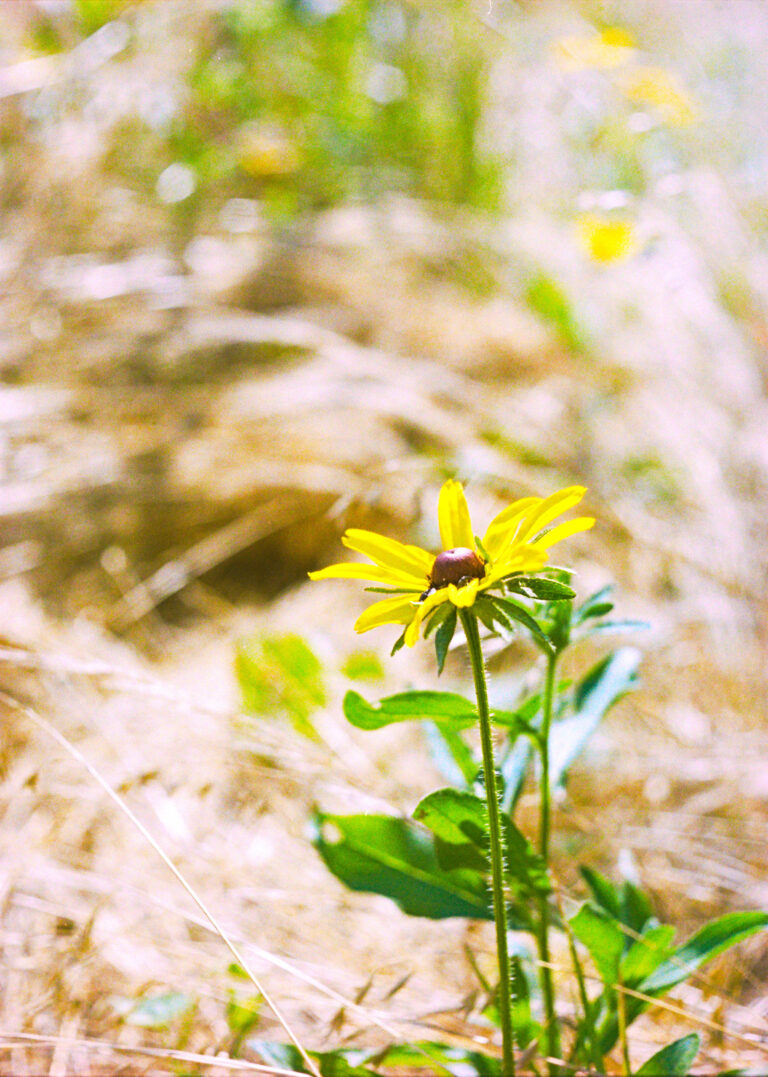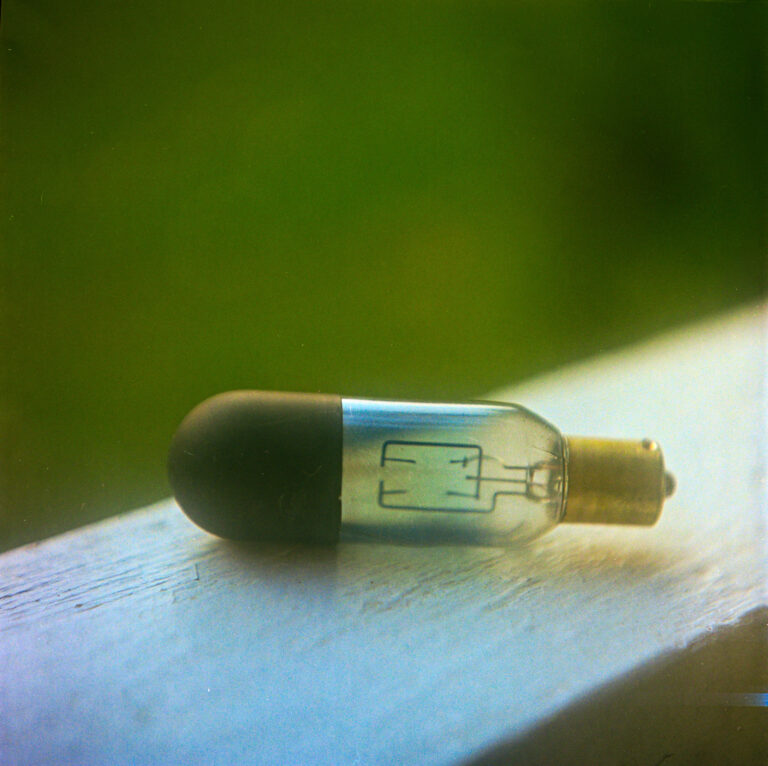If you’ve been into film photography for long enough, you might get to a point where you’ve shot most or all of the currently available stocks. Portra, Gold, Velvia, all old news. Maybe you even shot some Fuji Pro 400H before it was discontinued. And yet you still want to continue exploring and experimenting. Like Alexander the Great, you weep because there are no more lands to conquer.
At this point, you have two options; delve into expired film, or start looking into some of the more obscure stocks that are still being made.
Kodak Vision3
If you’ve been hanging around film nerds long enough, you’ll no doubt have heard about Cinestill. They take Kodak’s Vision3 motion picture film and remove the remjet layer. This makes their products compatible with the normal C-41 development process for color negative films.
But what is remjet and why does Cinestill bother to remove it?
It may sound exotic, but remjet is actually just short for removable jet black. It has a few functions: It prevents halations, which are reddish light flares around highlights caused by light traveling all the way through the film and bouncing back out. Remjet also helps to prevent static discharge, which can cause lightning bolt-like artifacts on film. And, importantly for movie cameras, it helps to lubricate film as it speeds through at 24 frames per second.
Sounds pretty important, but there’s a big catch if you’re sending it to a conventional photo lab. Motion picture film uses the ECN-2 process, which includes a step for removing the remjet. If the remjet isn’t removed beforehand, it will gum up film processing machines, ruining film and causing big problems for the lab.
Otherwise though, ECN-2 is similar to C-41, and the processes are more or less cross-compatible. If you’re processing your own film, or have a lab that offers ECN-2 development, read on.
Here’s a quick rundown:
Vision3 500T
The best choice for indoor scenes or otherwise poor lighting. The “T” stands for tungsten, meaning this film is color balanced for warm indoor lighting.
Vision3 250D
This is Kodak’s highest speed daylight balanced movie film. Best for overcast days, or general purpose shooting when you need to use slower shutter speeds or smaller apertures. This is the only Vision3 film I’ve personally shot.

Vision3 200T
Another tungsten balanced film, though the lower speed would mean this stock is better suited to well-lit scenes where finer grain is important.
Vision3 50D
In case it wasn’t obvious, this film becomes Cinestill 50D. A good choice for bright scenes where minimal grain is desired.
Ektachrome 100D
Yes, Ektachrome! Though it technically doesn’t fall under the Vision3 umbrella, it’s still motion picture film.
Kodak sells Ektachrome by the reel for movie studios, and the per-frame cost is way cheaper than their consumer Ektachrome. And as an added bonus, this stock doesn’t have any remjet to worry about. It’s just processed in standard E-6 slide film chemistry. As for resellers — Oh look! It’s us!
Forgive the plug, but I’m really excited about our respooled Ektachrome, which we’re calling Blixchrome. Not only is it far cheaper than Kodak’s consumer film, we also offer it in shorter rolls specially tailored for half frame cameras. It’s still in the works, but coming soon!
Kodak Aerocolor IV
First of all, a quick note: Aerocolor (a color negative film) is not Aerochrome (a color slide film). Unfortunately, Aerochrome is still very much discontinued. We live in hope.
That said, they do have something in common. Yes, it’s the “aero” part.
Since aerial surveillance equipment is so expensive and specialized, a lot of very old equipment is still in use. A lot of equipment that was designed in the film era – or at least before digital technology was mature enough for the task. In other words, a lot of aerial surveillance is still #shotonfilm. That’s why Kodak manufactures Aerocolor, a specialty aerial surveillance film for this unusual niche market.
Besides the cool factor of repurposing a film designed for such a specialized application to take pictures of your dog, Aerocolor has some unique properties that make it a must to try in my opinion.
Being designed for such a demanding application, Aerocolor is exceedingly sharp and fine-grained. It also seems to have a high silver content, which gives it a contrasty, dark look. Greens are also emphasized with this stock, presumably because aerial shots tend to have a lot of foliage in them.

This is a half frame shot, and it’s sharper than some full frame pictures I’ve taken.
Curiously, the film also lacks the typical orange mask you see with color negative film. Some adventurous photographers have tried developing it as slide film, with interesting results.
Like with movie film, Aerocolor comes from Kodak in huge rolls. Thankfully, there are plenty of hand-rolled 35mm canisters on the market.
Santacolor 100, Film Washi X, and CatLABS X film 100 are just a few. CatLABS is not explicitly stated to be Aerocolor, but I’m almost 100% sure it is. I mention it mostly because it’s available in 120, which is awesome.

Orwo WOLFEN NC400
This is a weird one.
It turns out, making a good color film stock is really hard. I’ve heard mixed things about Orwo’s color stocks, but I’m still very much in favor of any company producing new and original color film emulsions.
I personally got mediocre results from the roll I shot, but I think it was because my developer was expired. I still think it’s worth trying — just don’t buy direct from Orwo, I’ve heard their customer service is almost nonexistent.
Lomography
Lomography sells quite a few unique film stocks, so in the interest of brevity I’ll just pick out a few of my favorites / ones that I’ve personally shot.
Color Negative 100
Lomo’s color negative series might be repackaged Kodak film, but no one seems really sure. Either way, I’ve really enjoyed the rolls of 100 I shot. It renders sunlight in a pretty, dreamy way that reminds me of Gold 200. It has a nice overall color profile too.


Color ‘92
I haven’t personally shot this stock, but it’s certainly an interesting idea. Supposedly it’s supposed to mimic the color rendering and coarser grain of older film stocks. Who knows who manufactures it for Lomo, but it’s definitely going on my ‘films to try’ list.
Metropolis
I think this strikes a nice balance between having a cool ‘look’ and not overpowering the image or being too distracting. Lomo Metropolis is supposed to give pictures a dark, desaturated, moody look that would pair well with gritty cityscape photography. Hence the name. I have a roll of this that I’ll get around to shooting eventually.
Flic Film Aurora 800
A high speed color film that’s not Portra 800 or Cinestill 800T is quite a rarity these days.
As far as I’m aware, no one’s really sure what this stock is or where it comes from. It might be the 800 speed film Kodak only sells in disposable cameras, or it may come from some other third party. It’s not respooled Vision3 though, like a lot of “new” 800 speed stocks are.
I haven’t shot mine yet, but I’ve heard it produces punchy contrast and relatively fine grain. It’s not Portra, but it isn’t priced like Portra either.
Harman Phoenix 100
I almost didn’t include this one, since it’s been all over film photography news lately. But I do think it’s a great thing to see Harman making color film, so I’ll go ahead and mention it here.
You may know Harman as the owner of Ilford, the company behind iconic black and white film stocks like HP5. Unlike brands like Fuji, Harman is dedicated to the future of film photography. Seeing a new color stock from them is very exciting!
In my opinion, Phoenix is a great looking film but it’s definitely on the more experimental end of the spectrum. The grain is coarse for a 200 speed film, and also more color correction than usual may be necessary due to the lack of the orange mask that’s typical on color film. That said, I think this one’s definitely worth trying.

This is by no means an exhaustive list, but hopefully it’s enough to get you started exploring some great new stocks. Have fun and happy photography!







Leave a Reply